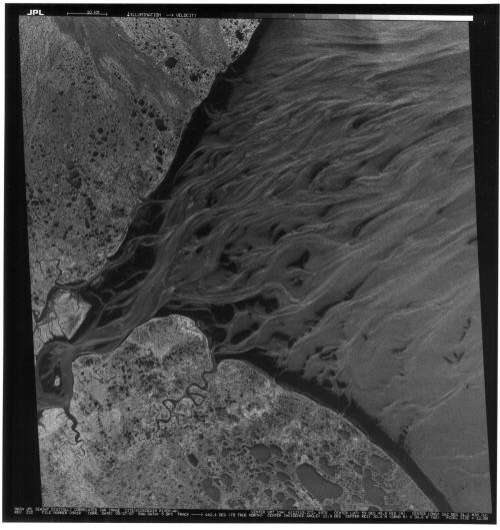Alaska Satellite Facility debuts new image collection

A treasure trove of new images is now available through the Alaska Satellite Facility Distributed Active Archive Center.
The center has released a collection of newly processed digital imagery derived from 1978 synthetic aperture radar data, which was gathered by NASA's Seasat satellite, the first mission dedicated to oceanographic research. Seasat also supported the first non-military orbital synthetic aperture radar ever deployed. The release of the data commemorates Seasat's 35th launch anniversary, which was on June 27.
The new downloadable digital imagery will enable scientists to travel back in time for research on oceans, sea ice, volcanoes, forests, land cover, glaciers and more. Before now, only approximately 20 percent of Seasat SAR data was processed digitally.
"For the past 20 years, I've had scientists calling me and emailing me from many places in the world asking me when Seasat data might be available," said Ben Holt, a senior research scientist at NASA's Jet Propulsion Laboratory. "It still has unexamined value; it represents a now-climatically relevant data set that has not been digitally processed to completion and so not fully analyzed."
SAR bounces a microwave radar signal off the surface of Earth to detect physical properties, including surface roughness. Unlike optical sensor technology, such as Landsat, SAR can see through darkness, clouds and rain.
Although Seasat suffered a catastrophic power failure in its fourth month, in 106 days the satellite collected more information about the ocean surface—its primary mission—than had been acquired in the previous 100 years of shipboard research.
Examples of new research that might make use of ASF's new suite of Seasat products include the following:
- Boreal forest land cover between 1978 and 1997 could be compared using data from Seasat and the Japanese Earth Resources Satellite 1.
- Seasat's seven orbit cycles of 3-day repeat data could be used to study the rates of change in North America and Pacific Rim volcano faults.
- Glacial change observations based on data acquired in 1978 over Norway and Alaska could establish an older baseline than is available from other sensors.
ASF's recent focus on the Seasat data came about through a combination of advances in processing technology and ongoing interest from scientists in tracking changes of Earth's surface over time.
Until now, Seasat SAR data was archived on magnetic tapes, and images processed from the tapes were available only as optical images of film strips or scanned digital images. Neither the tapes nor the film allow the quantitative analysis possible with the new digital archive. It was also not possible to use the tape media on which the limited set of initial digital imagery was recorded.
"For software engineers, the most interesting thing about processing SAR images of 1978 are the challenges of resurrecting data that sat dormant on magnetic tapes for 35 years," said ASF senior software engineer Tom Logan. "Basically we've been processing the newest SAR products from the oldest SAR data around. Images of Earth from 1978 have been gradually revealed as we've cleaned everything from 'bit rot' to time records."
Years after Seasat, its repeat-pass data enabled scientists to pioneer the now prevalent technique of interferometric SAR analysis, which compares two or more images of the same subject for purposes ranging from relief mapping to glacial motion. Seasat SAR data products hosted by ASF are available to users under NASA's open-access data policy.
More information:
Alaska Satellite Facility: www.asf.alaska.edu
Download the data: www-prod.asf.alaska.edu/seasat
Provided by University of Alaska Fairbanks
















